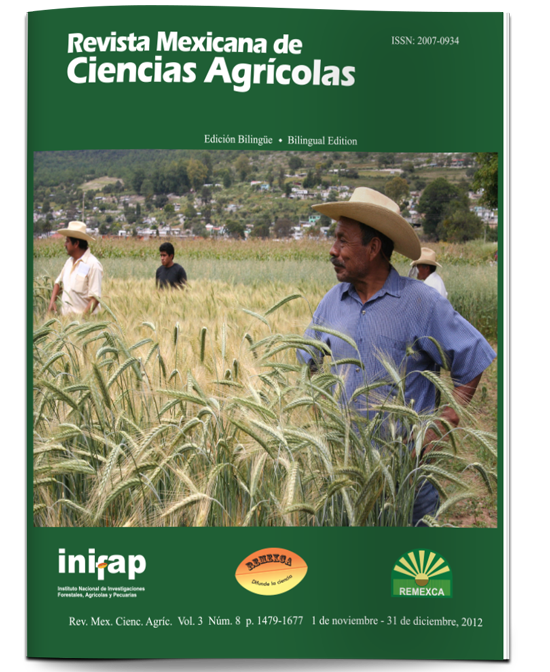Evaluation of agave bagasse compost as a component of substrates to produce seedlings of blue agave
DOI:
https://doi.org/10.29312/remexca.v4i8.1130Keywords:
Agave tequilana Weber blue variety, agave in vitro, organic substratesAbstract
Blue agave is the raw material for the production of tequila through a distillation process that generates about 400 thousand tons of bagasse, which, in part, is transformed into compost. Micro-propagated agave plants require an adjustment period of about nine months in the nursery or greenhouse shade, for which is grown in a container with a commercial substrate. For this stage, there are still no morphological parameters that serve as reference for evaluating the quality of the plants that can be planted in the field. For this reason, the aim of the study was to evaluate some morphological responses of seedlings of blue agave (micro-propagated) grown with different organic substrates: A commercial substrate (80% cocoa powder, 10% peat and 10% agave bagasse compost), coconut powder, and Canadian peat and four compost mixtures of agave bagasse. We established a completely randomized design with four replications, considering each plant as the experimental unit in greenhouses, between September 2007 and June 2008 in Tequila, Jalisco, Mexico. The results were statistically evaluated using ANOVA and mean comparisons by DMS. The substrate mixtures with thebestresultswerewiththecomposttreatmentsbagasse at 50%, followed by 30% of the compost and finally 70%, supplemented with coconut powder. The maximum values of the study variables recorded were: pineapple diameter, 5.0 cm, stem diameter, 3.8 cm, number of leaves, 15; leaf length, 55.4 cm and width of the longest leaf, ~ 4 cm, measures that could be used as agave quality standards before field planting.
Downloads
Downloads
Published
How to Cite
Issue
Section
License
The authors who publish in Revista Mexicana de Ciencias Agrícolas accept the following conditions:
In accordance with copyright laws, Revista Mexicana de Ciencias Agrícolas recognizes and respects the authors’ moral right and ownership of property rights which will be transferred to the journal for dissemination in open access. Invariably, all the authors have to sign a letter of transfer of property rights and of originality of the article to Instituto Nacional de Investigaciones Forestales, Agrícolas y Pecuarias (INIFAP) [National Institute of Forestry, Agricultural and Livestock Research]. The author(s) must pay a fee for the reception of articles before proceeding to editorial review.
All the texts published by Revista Mexicana de Ciencias Agrícolas —with no exception— are distributed under a Creative Commons License Attribution-NonCommercial 4.0 International (CC BY-NC 4.0), which allows third parties to use the publication as long as the work’s authorship and its first publication in this journal are mentioned.
The author(s) can enter into independent and additional contractual agreements for the nonexclusive distribution of the version of the article published in Revista Mexicana de Ciencias Agrícolas (for example include it into an institutional repository or publish it in a book) as long as it is clearly and explicitly indicated that the work was published for the first time in Revista Mexicana de Ciencias Agrícolas.
For all the above, the authors shall send the Letter-transfer of Property Rights for the first publication duly filled in and signed by the author(s). This form must be sent as a PDF file to: revista_atm@yahoo.com.mx; cienciasagricola@inifap.gob.mx; remexca2017@gmail.
This work is licensed under a Creative Commons Attribution-Noncommercial 4.0 International license.



